The southern French city of Avignon has many names. It is the city of popes. It is the city of markets, theater, gourmets. It is the center of the world-famous Côtes du Rhône wines and, of course, the city of bridges. When you hear the name Avignon, you immediately hear the song that goes with the bridge.
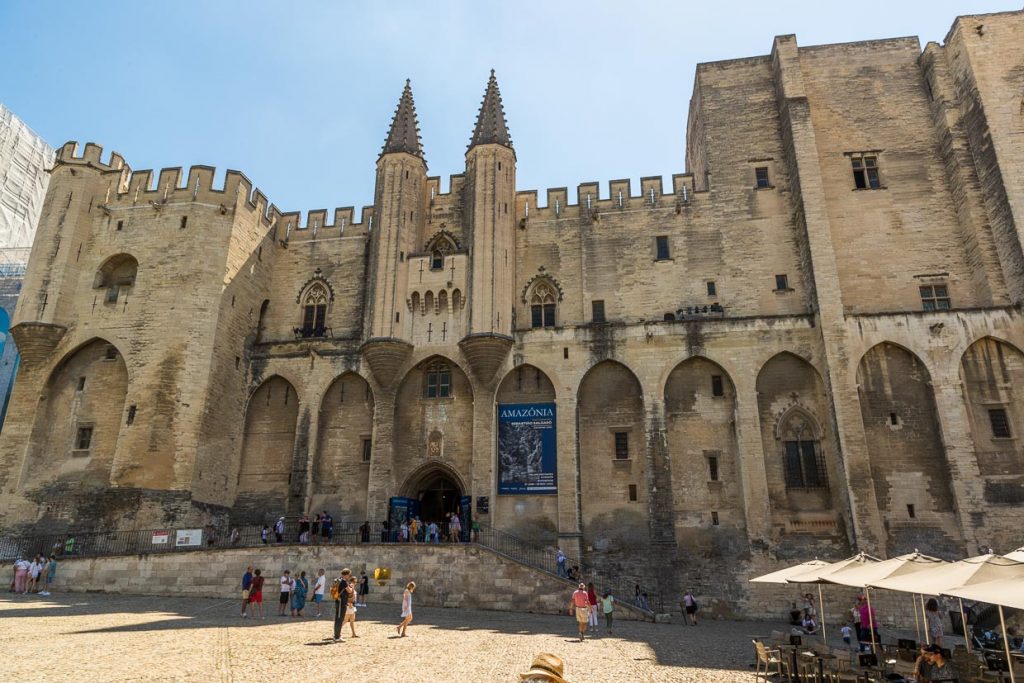
Palace of the Popes
Let’s start with a heavyweight, the Palace of the Popes. A visit to the Palais des Papes is worthwhile not only for those interested in history. The Unesco World Heritage Site is a multifunctional cultural facility. The Palais des Papes is home to temporary exhibitions of world renown. Here, every year in July, the historic courtyard is transformed into a stage during the theater festival. Visitors can use state-of-the-art museum technology to experience the palace’s rooms as they might have looked at the time of the Western Schism. Between 1309 and 1376, seven popes were based in Avignon instead of Rome. Loosely based on the motto Where the Pope is, there is Rome , Avignon became the center of the Curia. In less than 20 years, from 1335 to 1352, the papal palace was expanded to its current imposing size.
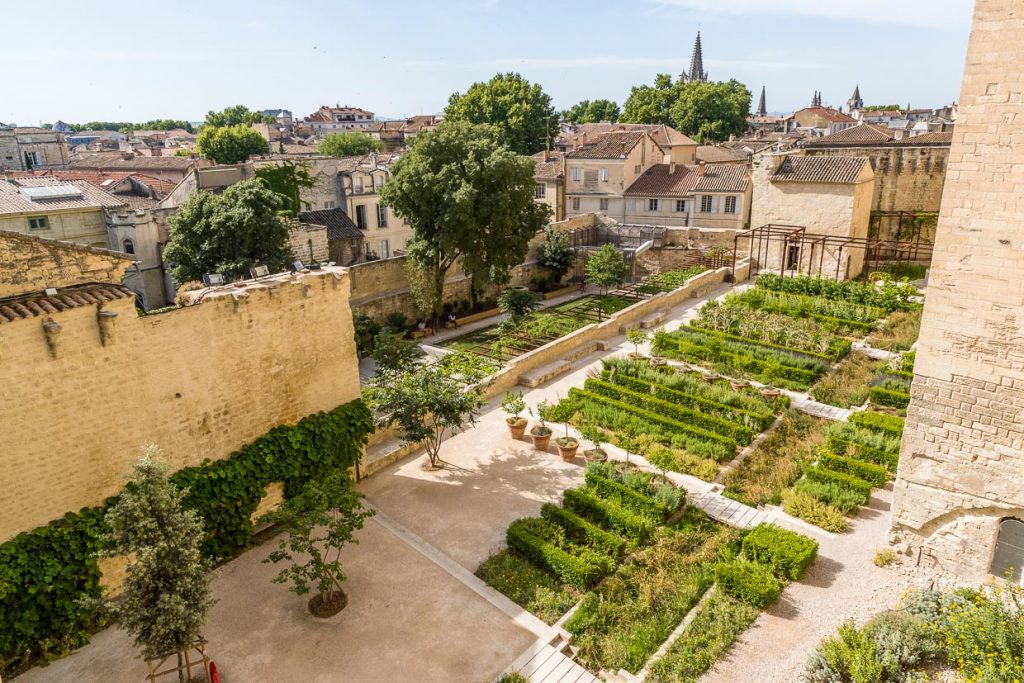
The chronicler Jean Froissart is said to have called the palace the most beautiful and solid house in the world. He was to be proved right, for to this day the Papal Palace, with an area of 15,000 square meters, is the largest gothic building in the world. Clever taxation allowed considerable wealth to flow into Avignon. In 1348, Pope Clement VI even bought the entire city. Then, in 1378, the Latin Church split. Due to the competing claims to the papal chair in Rome and Avignon, the city in Provence held the seat of the antipope, even while in Rome a pope again officiated as head. The schism ended in 1417 with the deposition of the antipope Benedict XIII. Even when the time of the popes in Avignon was over, the city remained the property of the Church until 1791. The famous Avignon Bridge formed the border between the Kingdom of France and the papal enclave during that time.
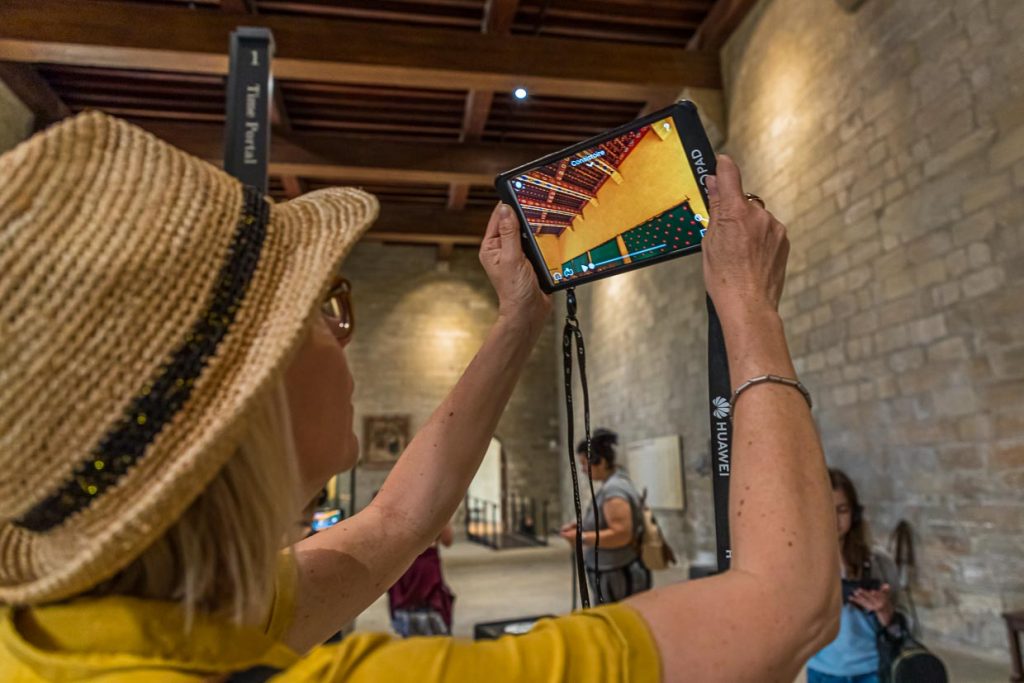
A look into the past
Admission to the Palace of the Popes also includes a Histopad. The tablet is operated by touchscreen. 25 rooms are open to visitors. In most rooms, there are consoles in the middle of the room. The Histopad is used to scan a code in each room and visitors are immersed in the 14th century. No matter where you turn with the tablet in your hand, it shows the furnishings as historians and scholars have reconstructed them. The walls glow in bright natural colors, the wooden ceilings are painted with decorations. The residence of the Vicar of God was luxuriously furnished by late medieval standards. Avignon was known for pompous festivities at all times. With the help of the Histopad, long rows of tables for a banquet or the Pope’s study become real. What is particularly practical, however, is that the computer-aided reality makes the other visitors invisible when they look at the tablet. So it’s not very disturbing when a large group of visitors floods the treasury or when an exhibition is filling the room in Clement VI’s private chapel, la chapelle Clementine.
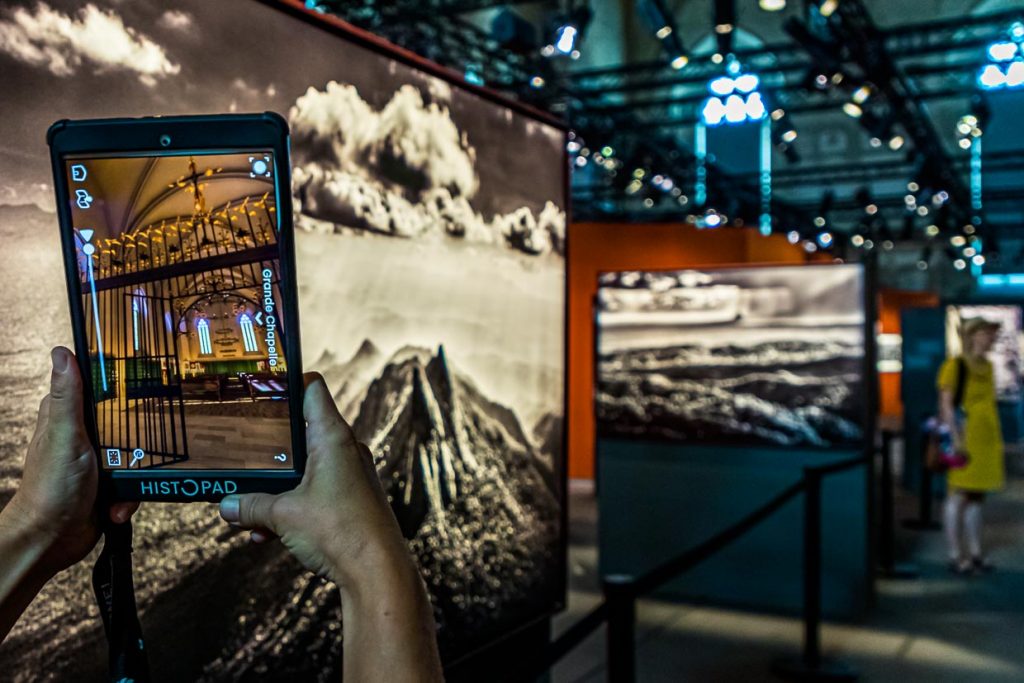
Avignon Theater Festival
Every year in the last three weeks of July, Avignon is transformed into a single theatrical stage when the festival of dance, theater and song takes place. Performances take place on the city’s large stages as well as in private backyards, cafés and small squares. During this period, nearly 8,000 artists perform in Avignon, spread over 130 venues. The festival was founded back in 1947 by Jean Vilar, a French actor and theater director. One of the largest stages is the courtyard in the Palace of the Popes. While a huge poster at the main entrance draws attention to the exhibition Amazonia by the famous photographer Sebastiao Salgado, a stage fills the courtyard. Thanks to Histopad and augmented reality on the one hand and the rededication as a cultural site for exhibitions and concerts on the other, it seems almost playfully easy to integrate this place steeped in history with its mighty walls into the lively cultural life of Avignon.
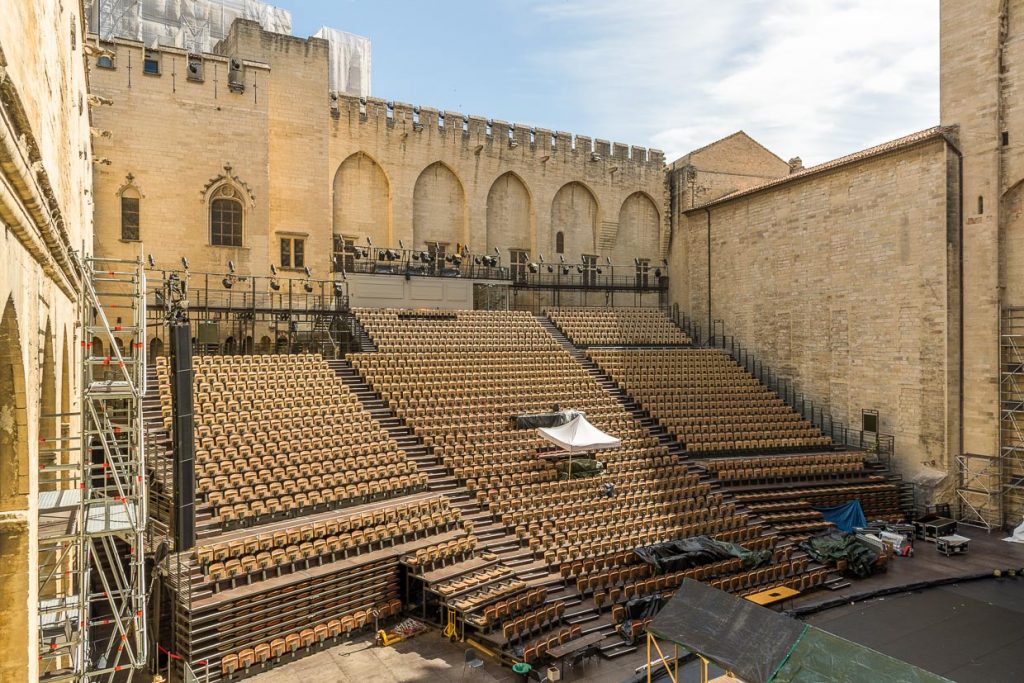
The theater windows of Avignon
In 1986, artist Marion Pochy and artist Dominique Durand began creating bricked-up windows that can be found on many buildings in the old city. To date, there are 70 windows, which are large murals that refer to famous productions in the history of the festival.
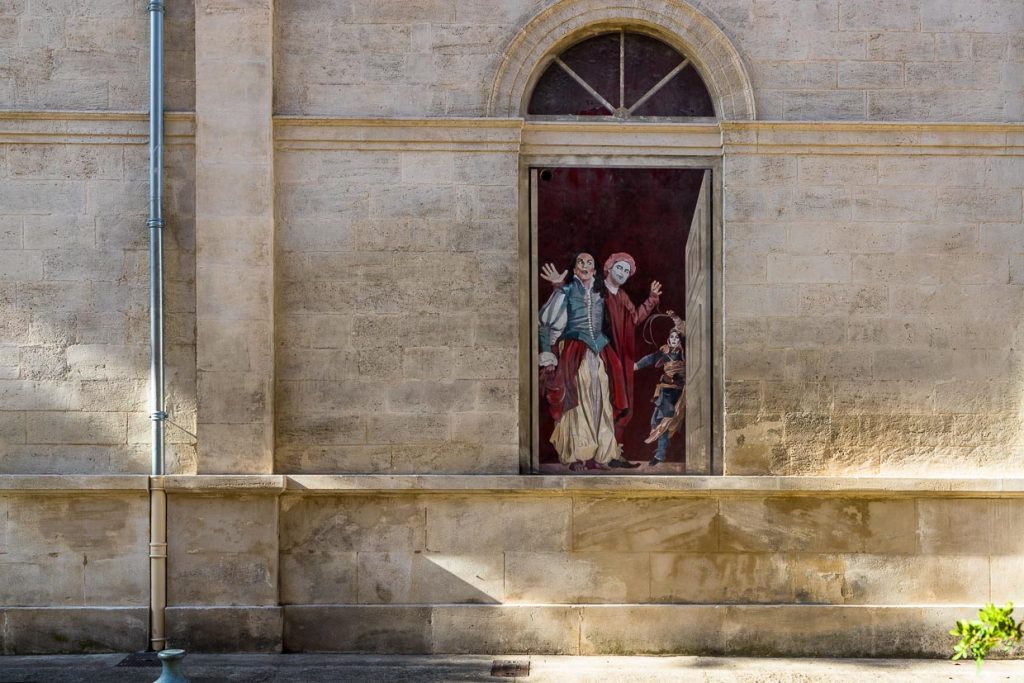
Famous figures from the history of theater look out the window at the passers-by. Richard III leans broodingly against a pillar, Pablo Picasso suddenly looks you in the eye in the Rue Corneile, in the Rue Molière the clown Bip looks sadly at the street, and festival founder Jean Vilar shines in a Shakespearean role. So cheer up, even if you walk through Avignon outside the lively festival days, you will always get a touch of theatrical atmosphere.
A city tour with a professional guide is highly recommended, so you learn a lot about the history, can ask questions and get anecdotes told that are not in any travel book.
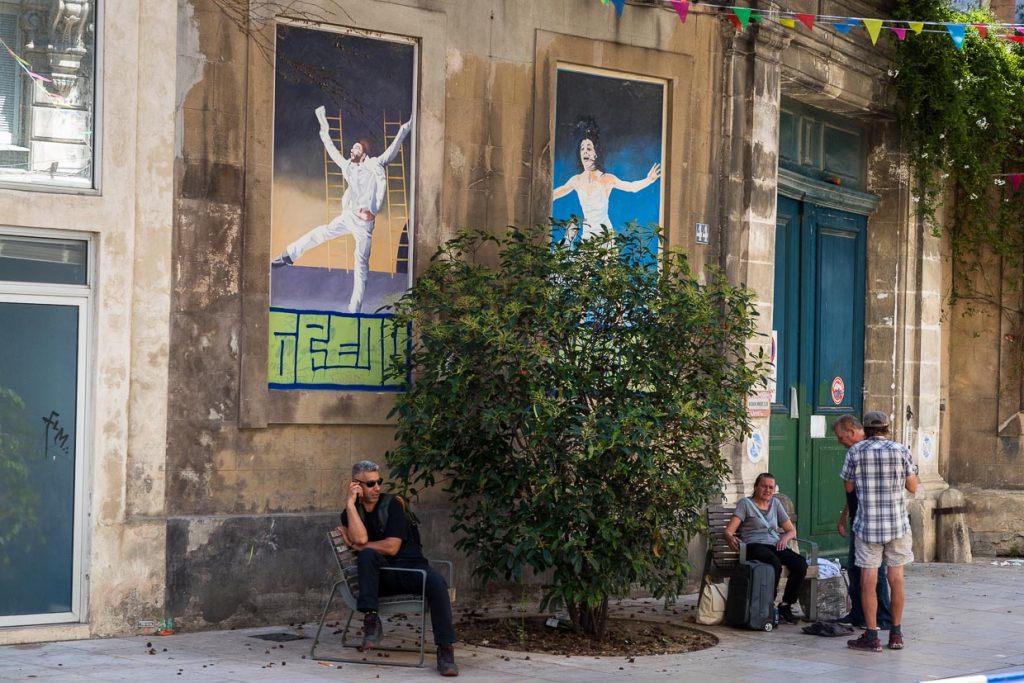
More information about the current cultural program in Avignon on the website of Avignon Tourisme. For festival fans, go here for an overview of venues in often impressive historic settings. Good to know for those arriving by car: There is a free large parking lot on the Île de la Barthelasse, a large river island in the Rhône. From here, shuttle buses, which are free on weekdays and cost about 2 euros on weekends, shuttle to the Porte de l’Oulle. Just beyond the city gate, Avignon welcomes visitors with sidewalk cafes and restaurants.
The research on site was supported by Avignon Tourism.

